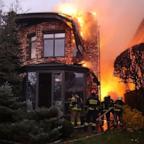Biden's retaliatory strikes come with risks of escalation and political consequences: Experts
President Biden is facing a turning point in the Middle East conflict that carries significant risks of escalation and heavy election-year political consequences.
The debate inside the White House ahead of the retaliatory strikes was tense, according to a U.S. official, as the administration weighed options that some believe will send a clear message to Iran-backed proxy groups to stop the attacks and others fear could trigger broader fighting in the region.
"The choices that any administration and every administration have faced since the Iranian Revolution are fraught," Aaron David Miller, a former State Department official, told ABC News. "They are not between good and bad policies. They're between bad and worse policies."

Biden's decision making is made only more complicated by the impending election, they said. Many Republicans, including Donald Trump, have accused him of being weak in his response to Iran-backed groups and their attacks on U.S. forces.
"He's in a politically tough spot because policy would compel him to think about this and act with a scalpel," the Center for a New American Security's Jonathan Lord said. "But this being an election this year, and this being probably the premier foreign policy issue Republicans are lining up to cudgel him with, he can't let policy be the only consideration here. Politics, of course, plays a role."
Read more here.






